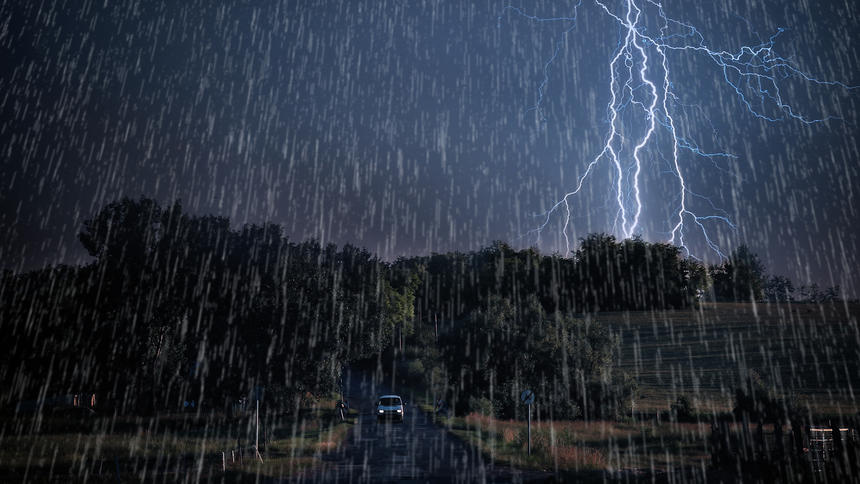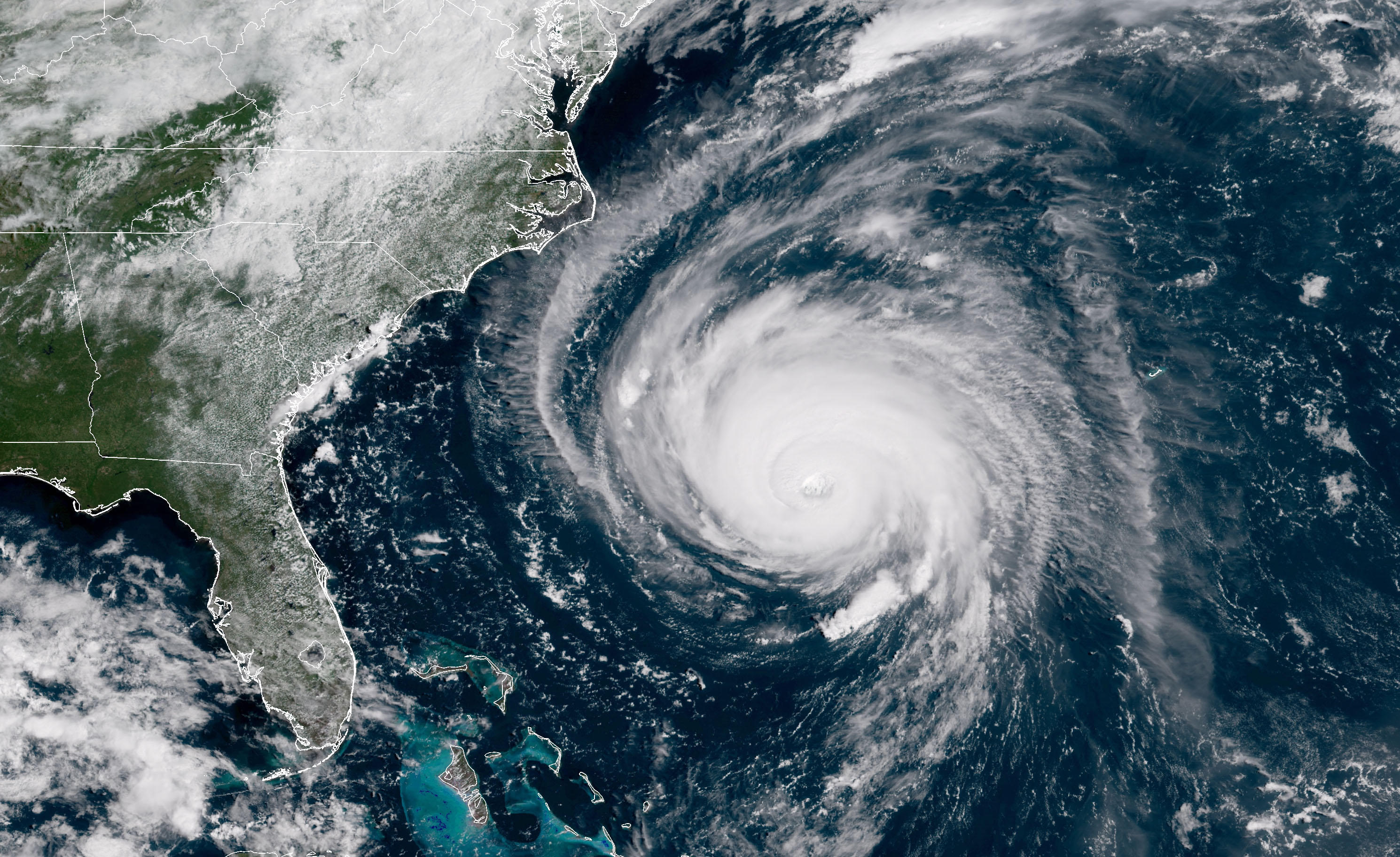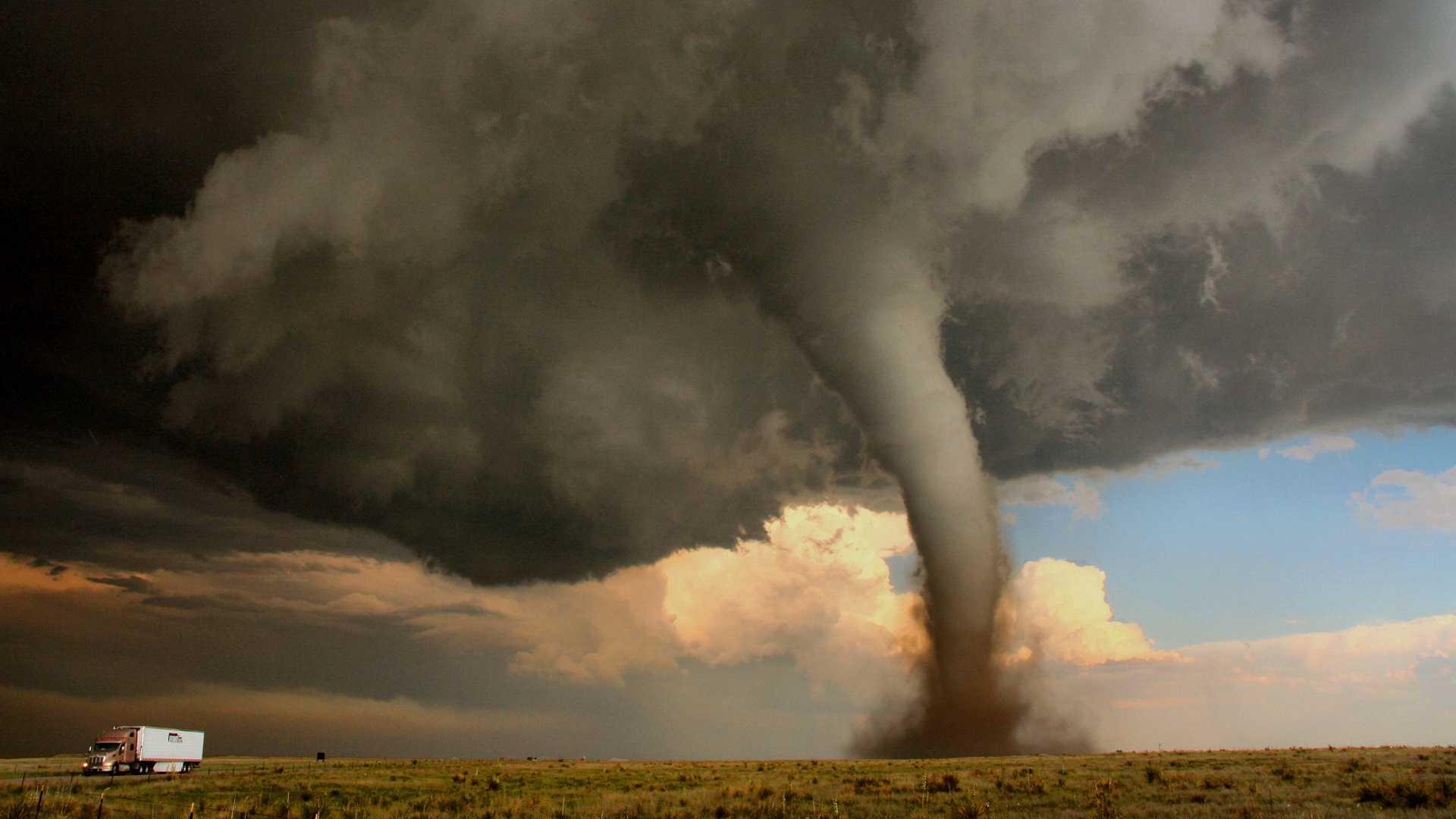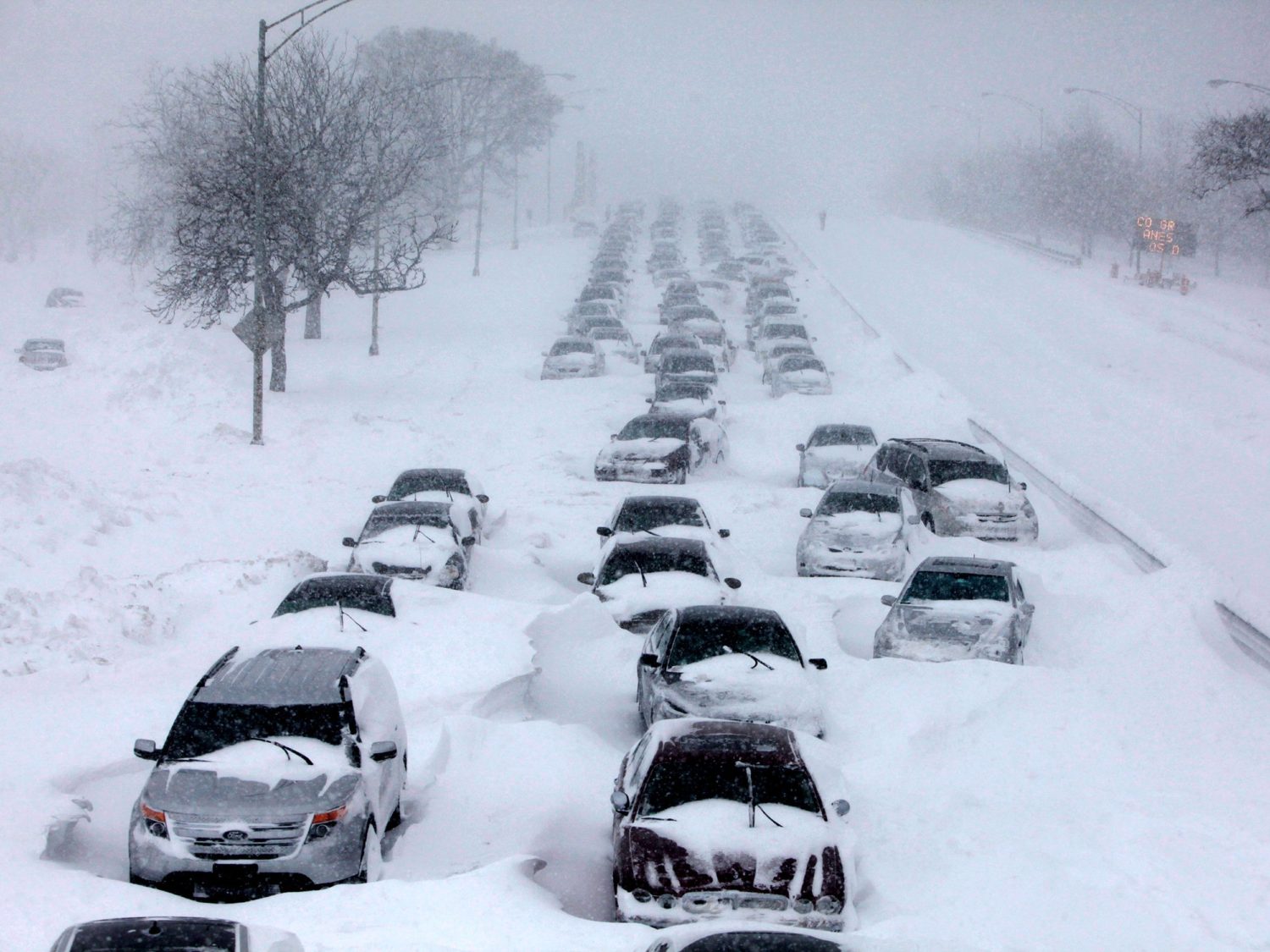This is a large body of air that has similar temperature and moisture content throughout.
Air Mass
The type of air mass that forms toward the poles and has cold air.
Polar
What does this symbol mean?

Cold front
What kind of storm is depicted here?
Thunderstorm
This is what the weather service announcers call when conditions are favorable for a tornado to occur.
Tornado Watch
What pushes air masses in a similar west-to-east direction?
Jet Stream
Where in the world do most tornadoes occur?
The United States
What does this symbol mean?
What kind of storm is depicted here?
Hurricane
This type of storm forms over oceans near the equator.
Hurricane
The boundary where two air masses meet
Front
Although the official boundaries of ________ ________are not clearly defined, the main part extends from northern Texas, through Oklahoma, Kansas, Nebraska, Missouri, Iowa, South Dakota, and North Dakota.
Tornado Alley
What does this symbol mean?
Warm front
What kind of storm is depicted here?
Tornado
This is what the weather service announcers call when a tornado has been seen or picked up by radar.
Tornado Warning
The major wind belts over the United States are called the ______.
Westerlies
Areas that have lower pressure than the surrounding areas where the air masses converge (come together) and rise, causing stormy weather.
Cyclones
What does this symbol mean?
Stationary front
What kind of storm is depicted here?
Blizzard/ Winter Storm
What can form in minutes and usually occur in the United States. They can be 200-300 yards across.
Tornado
Areas of different air _________ affect the weather.
pressure
Air masses can be thousands of kilometers across and extend 16 kilometers into the ________. (Hint: It is a layer in the atmosphere).
Stratosphere
What does this symbol represent?
Low pressure system
What kind of storm is depicted here?
Flood
An air mass gets its moisture and temperature characteristics from the area over which it forms. These areas are called _____ ______.
Source Region